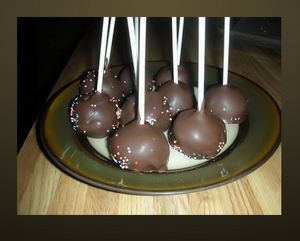It is pretty easy to make a fake stained glass window in your home.
What You Need:
A Window
Stained glass pattern (free online, see below)
Stained glass paint (or, permanent marker pens)
Liquid Leading (or, lead-look window tape)
Step One: Pick Out Pattern
Finding the right stained glass pattern for your window will take some thought. Some people enjoy the stained glass pattern to just go around the upper edges of the window in an arch effect, others may be trying to paint an transom window above a door, and still others might be considering painting their complete sliding glass door unit. Whatever your needs are in stained glass patterns there is one available free for you to print online. Click here to view instructions on where to find stained glass patterns.
Step Two: Prepare Window
You will want to clean your window with a cleaner that does not leave a residue and one that provides for complete oils and calcium removal or your paint will not stick to the glass right. I have always used a strong bleach solution and a razor blade, but most people prefer buying one of the products prepared for this purpose on the market. You are looking for a glass surface conditioner. Click here to view a sample of a glass surface conditioner product.
Step Three: Set Up Pattern
When painting windows, I prefer to paint on the inside because I believe that the paint may last longer this way – however this is just my belief, the painting can be done from either side of the window. Decide what side of the window you would like to paint and tape your pattern up on the other side of the window so that you can see it through the window. Stand across the room to look at the pattern and make sure that it looks visually appealing from all angles before beginning.
Step Four: Paint Leading On
On the glass side of your pattern covered window, paint your leading lines on by following the lines on the pattern. It is fine if they are not perfect, nobody notices little imperfections in the final product. You have a little room for errors; if lines are wiggly, just make them thicker. If lines are too thin, beef them up. If you smear something by accident, scrape it off with a razor blade. This step is like coloring over the lines in a coloring book. Click here to see a sample of colors that window paints come in.
Step Five: Painting the Window
After the lead lines are dry on your window, color in your design with window paints or permanent marker pens. For those using marker pens, you will not have lead lines on the window yet, just follow the lines on the pattern. I like to start at the top of the pattern and paint my way downward so that my arm doesn’t brush against any wet paint and smear it.
Step Six: Options
For the people using permanent marker pens to color in your pattern, you will want to trace around the edges of your colored pattern with paint on lead, or lead-look tape at this point. Marker pens color on in thick lines, by doing your lead lines last, you are assuring yourself that your colors go on all of the way to the edges.
Step Seven: Remove Pattern
After all of your painting is dry, you can remove the pattern from the other side of the glass to see if you like the finished product. Give a second (or even third) coat of marker or glass paint to the areas that need more color.




